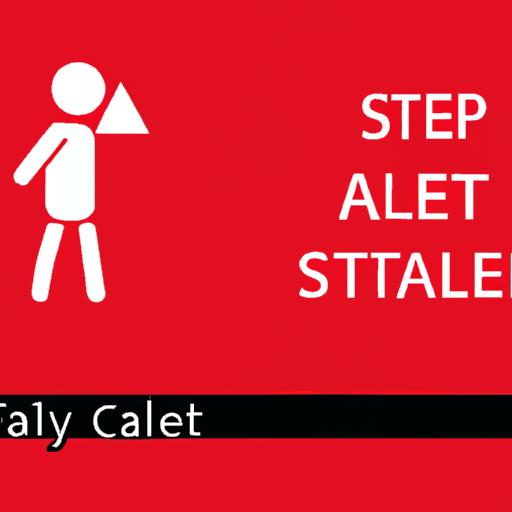Avoiding Common Scams and Frauds in Card Transactions
Are you tired of being duped by greedy scammers? Well, pave the way to a fraud-free future, my fellow shopaholics! In this carnival of cautionary tales and savvy tips, we’re diving headfirst into the treacherous waters of card transactions. From the notorious pickpockets of the digital realm to the sly con artists lurking in plain sight, we’ve got your back! So tighten those purse strings, secure your credit cards, and let’s uncover the secrets to avoiding those nerve-racking scams that make your heart skip a beat. Get ready for a wild ride as we unravel the enigmatic ways of these unscrupulous swindlers and channel our inner Sherlock Holmes to safeguard our precious plastic. Trust us, you’ll soon be slapping fraud in the face like a boss!
Protect Yourself: Tips to Avoid Common Scams and Frauds in Card Transactions
When it comes to card transactions, it’s crucial to stay one step ahead of scammers and fraudsters. Protecting yourself and your hard-earned money should be a top priority. Here are some valuable tips to help you avoid common scams and frauds:
1. Keep Your Card Information Secure:
- Never share your card details, such as the card number, CVV, or PIN, with anyone.
- Be cautious when entering your card information online, ensuring you are on a secure website with a valid SSL certificate.
- Avoid storing your card details on websites or apps, unless they are reputable and trusted.
- Regularly review your bank statements to detect any suspicious transactions.
2. Beware of Phishing Emails and Calls:
- Do not click on links or download attachments from unknown or suspicious emails.
- Be skeptical of unexpected calls asking for your card information or personal details. Hang up and call the official customer service number of your bank to verify.
- Train yourself to recognize common phishing techniques, such as spelling errors, generic greetings, or urgent requests for personal information.
- If in doubt, always reach out to your bank or card issuer directly for assistance.
Remember, scammers are constantly evolving their tactics, so it is essential to stay informed and aware. By following these tips, you can ensure a safe and secure card transaction experience. Stay vigilant and protect yourself!
Stay Alert: Recognizing Red Flags and Suspicious Activities in Card Transactions
In today’s digital age, card transactions have become an everyday occurrence. However, with the increase in online shopping and electronic payments, scams and frauds have also become more prevalent. It is crucial for consumers to stay alert and recognize red flags to avoid falling victim to such malicious activities.
- Unusual or Unexpected Transactions: Keep an eye out for any transactions that you do not recognize or did not authorize. Whether it’s a small amount or a large sum, any unfamiliar activity should raise a red flag.
- Unsolicited Calls or Emails: Be wary of unsolicited calls or emails requesting your card information. Legitimate financial institutions or merchants rarely ask for this information over the phone or through email.
- Phishing Attempts: Watch out for phishing attempts where scammers pretend to represent a trusted entity, in an attempt to trick you into revealing your personal or financial information. Be cautious when clicking on links or opening attachments from unknown sources, as they could be potentially harmful.
When conducting card transactions, it is essential to take precautions and protect yourself from scams and frauds. Here are some additional red flags to stay alert for:
- Unsecure Websites: Avoid entering your card details on websites that do not have a secure connection. Look for the padlock symbol in the web address and ensure the website address starts with “https://” instead of just “http://”.
- Suspicious Charges or Discrepancies: Regularly review your card statements and always double-check for any suspicious charges or discrepancies. Report them immediately to your card issuer.
| Date | Transaction | Amount |
|---|---|---|
| 2022-02-01 | Amazon | $54.99 |
| 2022-02-03 | Unknown Vendor | $150.00 |
| 2022-02-05 | Apple Store | $25.00 |
By staying alert and recognizing red flags, you can avoid common scams and frauds when conducting card transactions. Remember to trust your instincts and always prioritize your financial security.
Secure Your Accounts: Best Practices to Keep Your Card Information Safe
Avoiding Common Scams and Frauds in Card Transactions
When it comes to the security of your card transactions, it’s essential to take proactive measures to protect your sensitive information from falling into the wrong hands. By following these best practices, you can minimize the risk of scams and frauds:
- Regularly monitor your accounts: Keep a close eye on your credit card and bank statements to quickly identify any unauthorized charges or suspicious activities.
- Create strong, unique passwords: Avoid using easily guessable passwords and ensure each account has its own distinct password. Consider using a password manager to help you generate and store complex passwords securely.
- Enable two-factor authentication: Adding an extra layer of security to your accounts, two-factor authentication requires you to provide a second form of verification, such as a code sent to your mobile device, in addition to your password.
- Be cautious of phishing attempts: Stay vigilant and do not click on suspicious links or provide personal information in response to unsolicited emails, messages, or phone calls. Legitimate institutions will never request sensitive data through these channels.
Additionally, it’s essential to use secure networks when making card transactions. Avoid making purchases or accessing sensitive accounts while connected to public Wi-Fi networks, as they could leave your information vulnerable to hackers. Remember, staying informed and being proactive are key to keeping your card information safe and secure.
Smart Shopping: How to Safeguard Your Card Transactions Online and Offline
With the rise of online shopping, it’s important to stay one step ahead of scammers and fraudsters who are constantly looking for ways to exploit card transactions. By taking a few simple precautions, you can protect yourself and your hard-earned money. Here are some smart shopping tips to help safeguard your card transactions, both online and offline:
-
Beware of suspicious websites: Before making a purchase online, always ensure that the website is legitimate and secure. Look for the padlock icon in the URL bar and check if the website starts with “https” instead of “http”. Additionally, do some quick research about the website and read reviews from other customers to ensure their credibility.
-
Keep your card details safe: Never share your card details over an unsecured or public Wi-Fi network. Fraudsters can easily intercept your information, leading to unauthorized transactions. Instead, use a secure and private internet connection. Additionally, be cautious of phishing attempts through emails or text messages asking for your card details. Legitimate organizations will never ask for such information via these channels.
| Credit Card Fraud Statistics |
|---|
| Over 15 million Americans fall victim to identity theft each year. |
| In 2019, over $16 billion was lost due to credit card fraud. |
| Almost 50% of fraudulent transactions happen in the United States. |
Remember, staying vigilant and taking appropriate precautions can greatly reduce the risk of falling victim to scams and frauds. By following these smart shopping tips, you can enjoy the convenience of card transactions without compromising your financial security. Stay safe, shop smart, and protect your hard-earned money!
Key Takeaways
And that, my vigilant friends, brings us to the end of our journey through the treacherous labyrinth of card transactions. We’ve navigated the murky waters where scammers lurk, armed with our wits and a newfound understanding of the cunning tricks employed by these audacious fraudsters.
Remember, knowledge is power, and now you possess the wisdom necessary to outsmart those conniving scoundrels. Stay one step ahead, and your hard-earned money shall remain secure within the fortress of your own card transactions.
But let’s not get complacent, oh no! Scammers are like chameleons, forever adapting and evolving. So, keep your senses sharp and your detector of suspicion on high alert. Just like a superhero patrols their city, you shall be the protector of your own financial kingdom.
Trust your gut, dear readers! If something feels fishy, it probably is. Be cautious when providing your precious card details and never surrender them to shady websites or unscrupulous individuals. Remember, your card is your trusty sidekick, and you must guard it with your life!
As we bid adieu, let us revel in the fact that we are armed with the knowledge to slay scam dragons and eradicate deceitful demons. Forge ahead with confidence, equipped to ward off the snares of scammers at every turn.
So, my fellow guardians of secured transactions, go forth into the vast digital playground armed with your newfound knowledge. Protect yourselves and your loved ones, for you are now fortified against the conniving tactics of those who seek to defraud you.
May your cards blink with triumph, your transactions be swift and secure, and may you forever dodge the traps set by the malicious scammers who incessantly lurk in the shadows.
Farewell, brave warriors, and may your adventures in the realm of card transactions always end in triumph!






